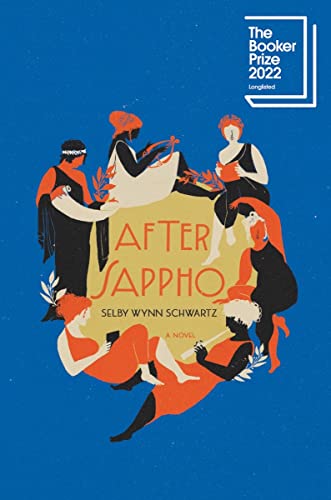After Sappho
As suggested by the title, After Sappho is a thoughtful novel of feminism, art, and sexuality. Taking place largely in Italy and France at the turn of the 20th century and its early decades, the meandering narrative of Schwartz’s Booker-longlisted novel touches upon the lives of women encountering, reinterpreting, and sharing both the ancient verse and the modern reclaiming of Sappho, classical Greek poet from the island of Lesbos. These women are poets, novelists, playwrights, thinkers, actresses, singers, dancers, and artists. All are, in different ways, activists and visionaries. In brief vignettes, they chafe against gender restrictions, they question patriarchal laws, they push against the boundaries of art, they remake themselves, and they find love among the other devotees of Sappho.
This is not a traditional narrative, either in the writing, in the characterizations, or in the plot. The characters—all real historical figures—number in the dozens. Some are familiar writers and artists, while others are less well-known (but no less fascinating) women, waiting to be discovered by readers. After Sappho is less a narrative of their lives and their histories and more a narrative of the sapphic ideas and philosophies spread by those women and their art. Written in a style that evokes the poetry of Sappho herself, Schwartz’s writing skips quickly between characters, offering a thought, an inspiration, a meeting, or an artistic creation. Sometimes the narration is third person, giving voice to the many women on its pages, often in their own words as drawn from their writings, letters, and diaries. Other times the narration is in first person plural, a Greek chorus of womanhood across space and time. A meditative and lyrical novel to linger over.










